Remember the days when you’d walk into a showroom, pick out your dream car and be asked a single, easy question: petrol or diesel? Those were simpler times.
Since the turn of the century, hybrids and electric vehicles (EVs) have gained traction, with those powertrains spawning an array of sub-types – series hybrid, mild-hybrid, plug-in hybrid, hydrogen fuel-cell EV, and extended-range EV, just to name a few.
The latter, otherwise known as an EREV or REEV (as Leapmotor calls it), is what features in the car on test here – the Leapmotor C10 REEV. Offered as an alternative to the ‘traditional’ BEV C10, the C10 REEV operates primarily as an electric vehicle, with a rear-mounted electric motor driving the wheels.
When the battery charge gets low, the 1.5-litre four-cylinder internal combustion engine ignites to generate electricity, recharging the battery and extending the driving range… or at least that’s how Leapmotor explains it.
The premise is (relatively) simple, bottle the EV driving experience and eliminate range anxiety through the addition of a petrol engine. In other words, you can have your cake and eat it too.
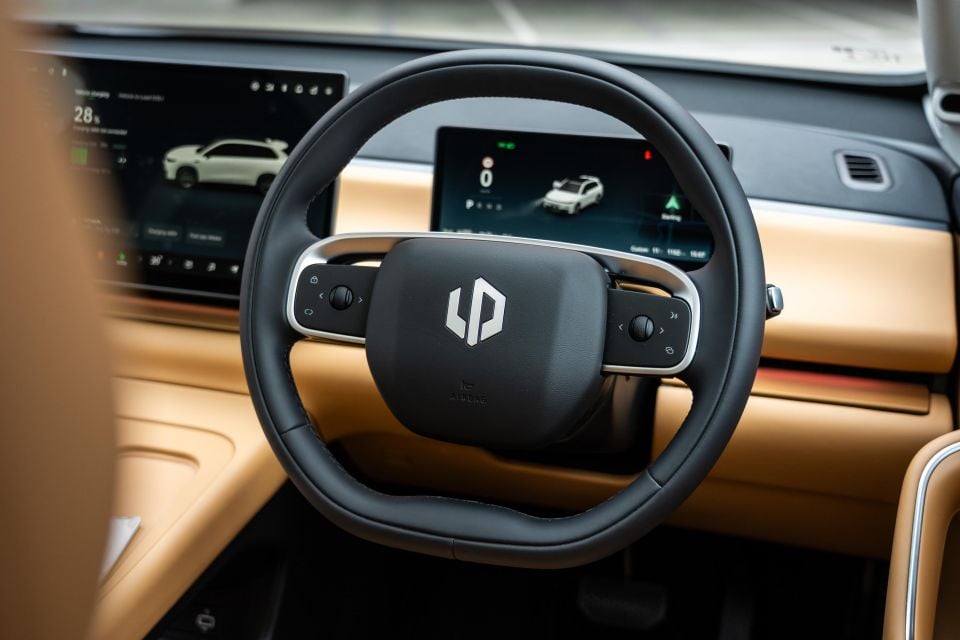
Priced from $45,900 drive-away, the C10 REEV is positioned to compete with similarly sized hybrid and electric SUVs including the Geely EX5, Jaecoo J7, Deepal S07, Nissan X-Trail e-Power, XPeng G6, Kia EV5, and Tesla Model Y. There’s no shortage of rivals, then.
But is a unique powertrain enough to catapult the C10 above the competition?
How much does the Leapmotor C10 cost?
Leapmotor C10 buyers pocket around $5000 by opting for the REEV instead of the pure EV, although the likelihood is that inflated maintenance costs will eat into those savings over the long term.

| Model | Pricing |
|---|---|
| Leapmotor C10 REEV Style | $45,900 drive-away* |
| Leapmotor C10 EV Style | $45,888 before on-road costs |
| Leapmotor C10 REEV Design | $49,900 drive-away* |
| Leapmotor C10 EV Design | $49,888 before on-road costs |
*Applicable to MY25 C10 REEV vehicles sold and delivered by June 30, 2025
Both REEV and EV versions considerably undercut similarly sized SUV rivals like the Model Y, EV5, S07, and the G6.
And Leapmotor has gone out of its way to sweeten the deal by offering C10 buyers a free wall charger valued at $800 if they sign on the dotted line by June 30, 2025.
To see how the Leapmotor C10 stacks up against the competition, check out our comparison tool
What is the Leapmotor C10 like on the inside?
My first thought upon opening the driver’s door of the C10 REEV and slipping inside was ‘wow, this is like being inside a Caramello Koala’.
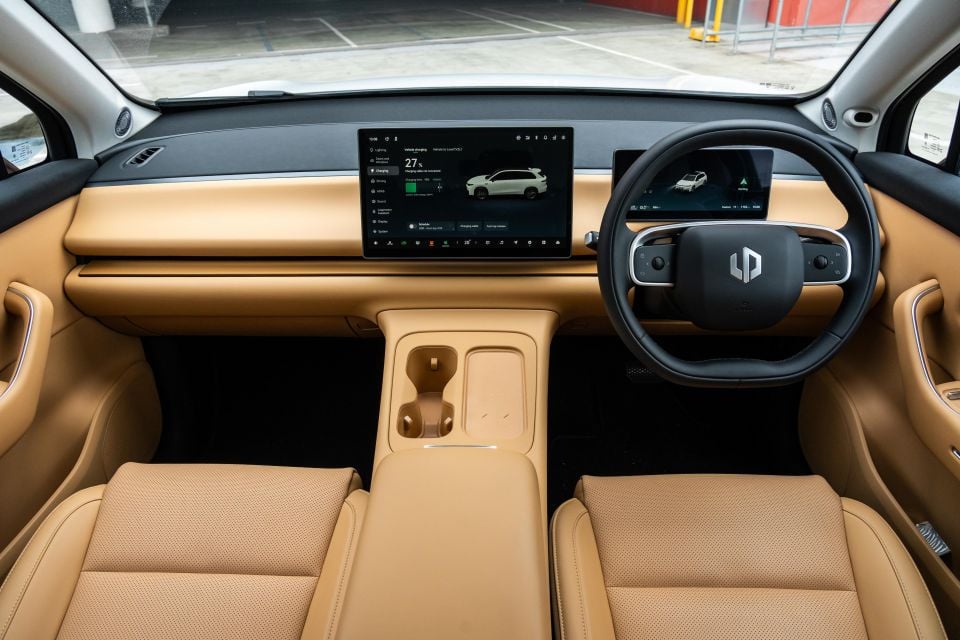
The optional ‘Camel Brown’ interior is striking to put it lightly, and will likely form the basis of most first impressions in the showroom. Whether that’s a positive impression is down to personal preferences, but I was definitely taken aback by just how much of the cabin is finished in the same creamy shade of caramel.
In addition to the seats, upper dash and door cards, the entirety of the centre console and lower dash area are likewise identical in colour, with boring black trim limited to the steering wheel, carpets and sections below the sills. A standard black interior is also offered, although REEV buyers miss out on the Midnight Aurora and Criollo Brown colourways.
Does it look more premium than your average mainstream SUV? Not necessarily. But does it feel more premium? Yes, yes it does. High-traffic areas are mostly finished in soft-touch materials, with harder plastics hidden out of sight.
All versions of the C10 come with a leatherette steering wheel as standard, while the Design trim level brings power-adjustable faux-leather seats, described by my partner as some of the most comfortable she’s sat in. The base and backrest are flat with minimal sculpting, but there’s ample cushioning and both front pews are heated and ventilated.
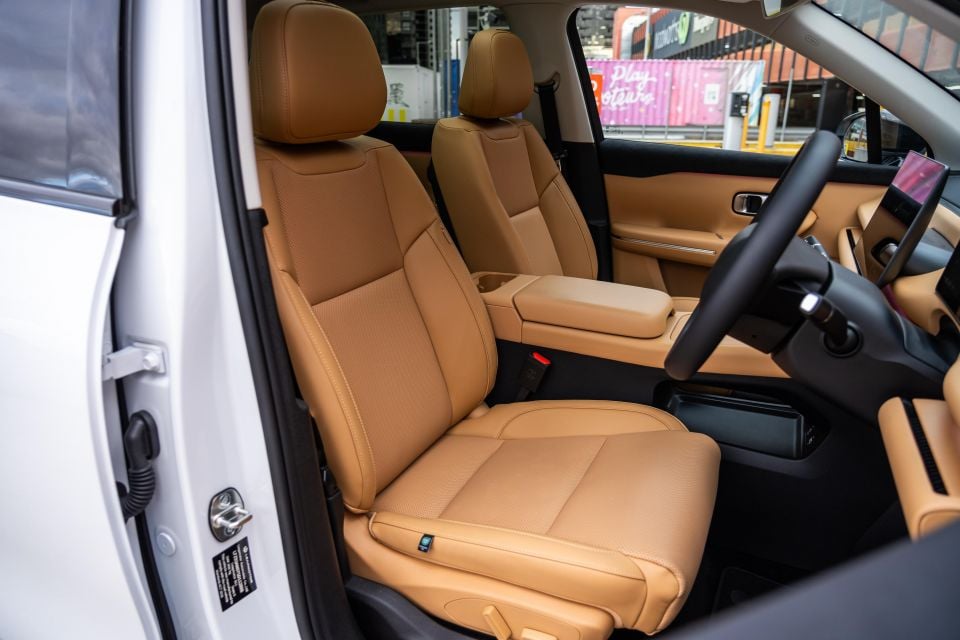
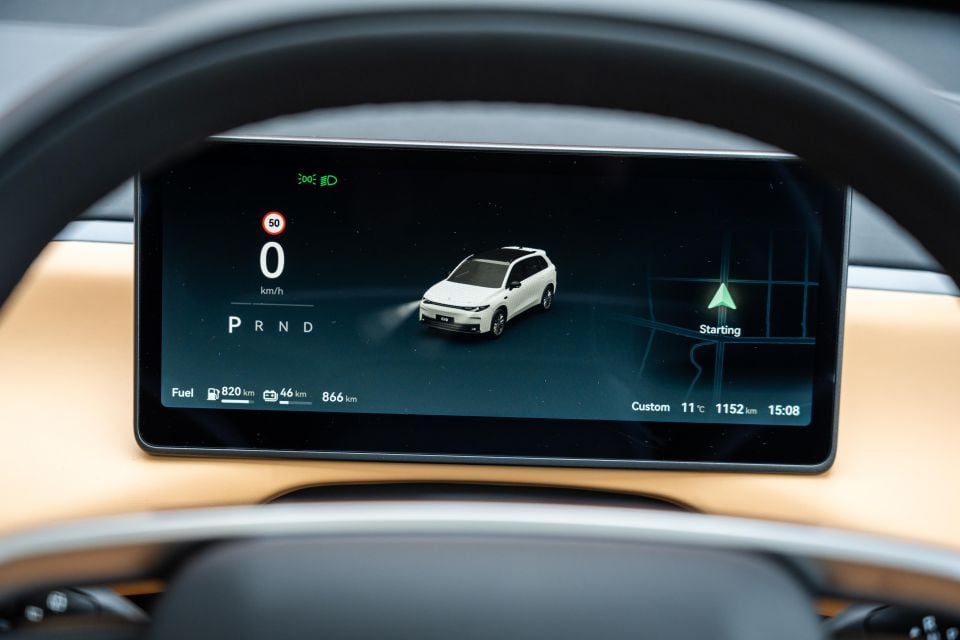
You can’t say that about a lot of sub-$50k family SUVs. There aren’t too many that boast a heated steering wheel, either, which makes the list of standard equipment for the Design.
Considering we tested this vehicle in the midst of a cold Melbourne winter, both features were welcome and utilised every single morning. Taking advantage of them requires use of the central infotainment screen – the control centre of the C10.
There are almost no buttons, switches or dials in this vehicle. Instead, all functionality is built into the media display, a quirk that can prove distracting while driving.
Nevertheless, both the infotainment and driver display screens are impressive bits of kit. There’s a lot to like here, both in terms of how the screens present and the features they offer.
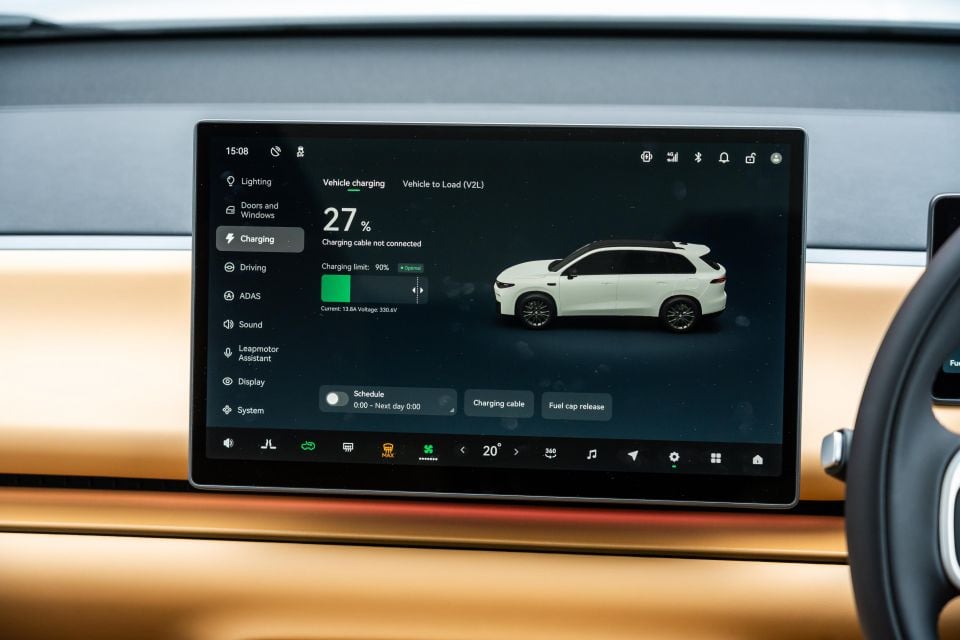
The infotainment system is Android-based, running on the LeapmotorOS operating system developed in-house. It’s polished and responsive, with a selection of gorgeous screensavers and a familiar app grid layout.
There’s plenty of substance to go with the style, too. Dig into the system and you’ll find a comprehensive app store offering popular apps including Spotify, TikTok, Amazon Music and Zoom, as well as a native internet browser and navigation with live traffic updates.
Just as well, because all versions of the C10 lack any form of smartphone mirroring, which is likely to be a dealbreaker for some potential buyers.
Instead, you’re forced to learn the ins and outs of Leapmotor’s tech, learn being the key word. There’s a lot to get your head around, despite the complete absence of physical controls in the cabin.

It’s easiest to think of the infotainment screen like a big iPhone. In addition to an app grid layout, the system utilises the same swipe and tap mechanics as modern smartphones, and there’s a pinned icon bar at the bottom of the screen containing shortcuts to climate controls, audio, navigation, settings, and the main menu.
Like an iPhone, you can swipe down on the screen for quick access to key functions – in this case the plethora of drive modes.
If it all gets a bit too much, there’s an onboard user manual to point you in the right direction. You might scoff at that suggestion, but I was only just starting to feel confident in the C10 after a full week of testing.
Behind the steering wheel sits a small, rectangular digital driver display which is far more straightforward to operate. Just don’t expect much functionality from the unlabelled steering wheel controls.
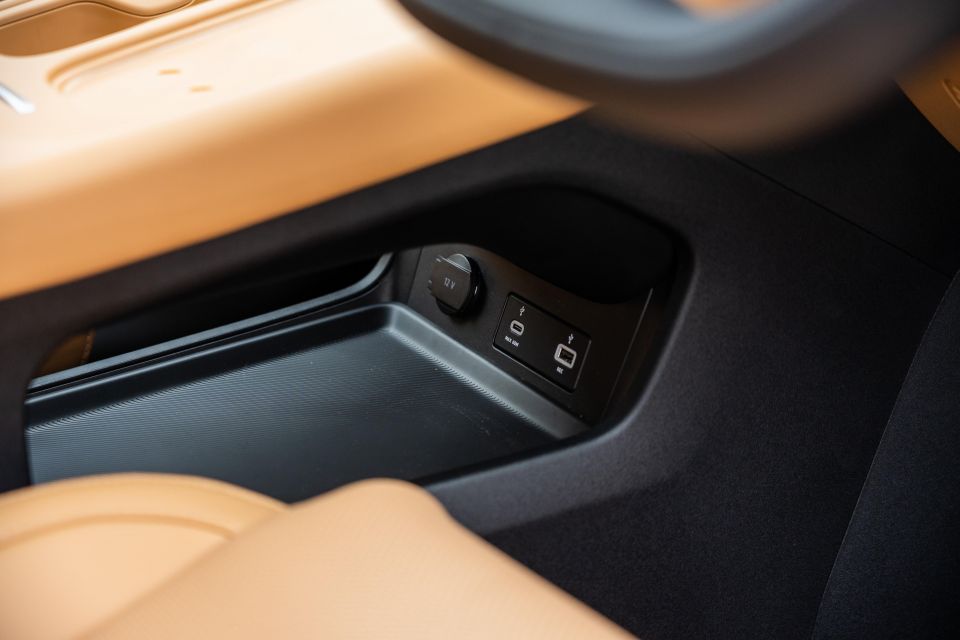
Considering the uncluttered nature of the interior, cabin storage is disappointingly lacking.
The centre console is deep, but the same can’t be said of the glovebox or door bins. Those deficiencies are somewhat offset by the inclusion of a storage tray built into the central tunnel, complete with USB-A, USB-C and 12V connections.
Storage may be limited up front, but there are no such packaging issues in the second row. It’s properly spacious back there, with plenty of room for both people and stuff.
Up to three full-sized adult passengers can get comfortable without issue, and the second row always feels open and airy thanks to the fitment of a panoramic glass roof. The rear seats are super plush, and slightly reclined for superior comfort over longer journeys.
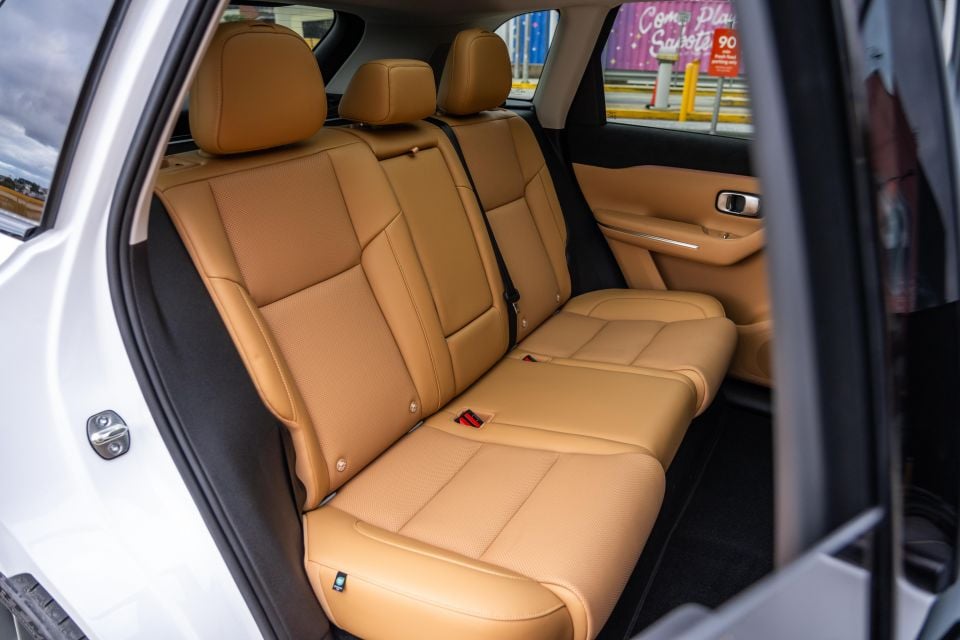
Quality of materials remains impressive for the price point, and there’s a generous set of amenities including USB-A and USB-C outlets, map pockets, roomy door bins, cupholders, and a centre armrest.
The boot boasts 546 litres of cargo capacity – excellent for the segment. Better yet, you can fold the rear bench flat to access a whopping 1375 litres of space.
A flat boot floor aids the loading of bulky items, as does the lack of a step between the boot and bench storage. Charging cables can be stored underneath the boot floor, although there’s no spare wheel to be found.
My only complaint regarding the boot is that the power tailgate button is hidden near the right side indicator – why not stick it above the number plate, where people expect it to be?
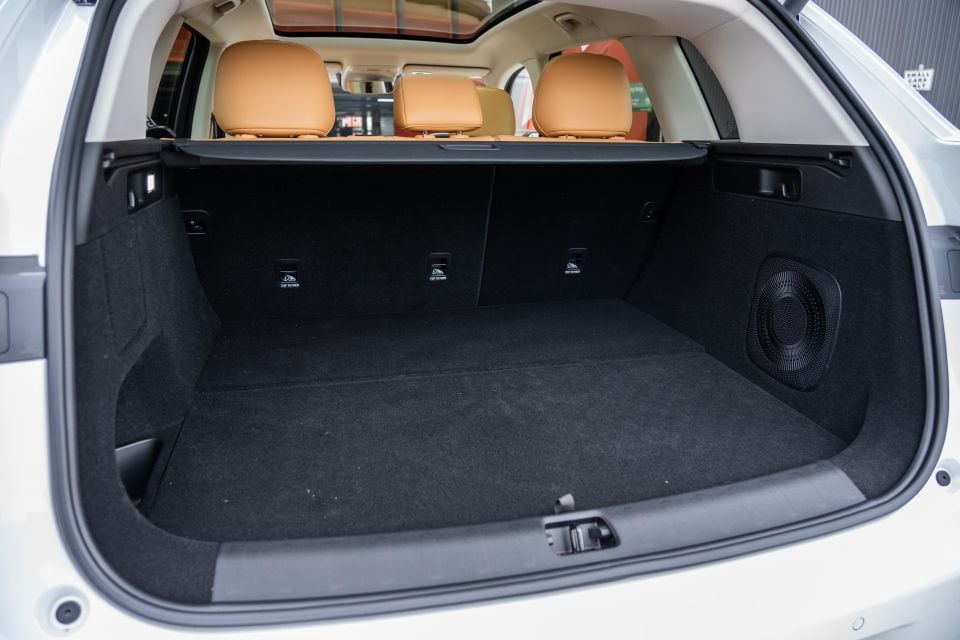
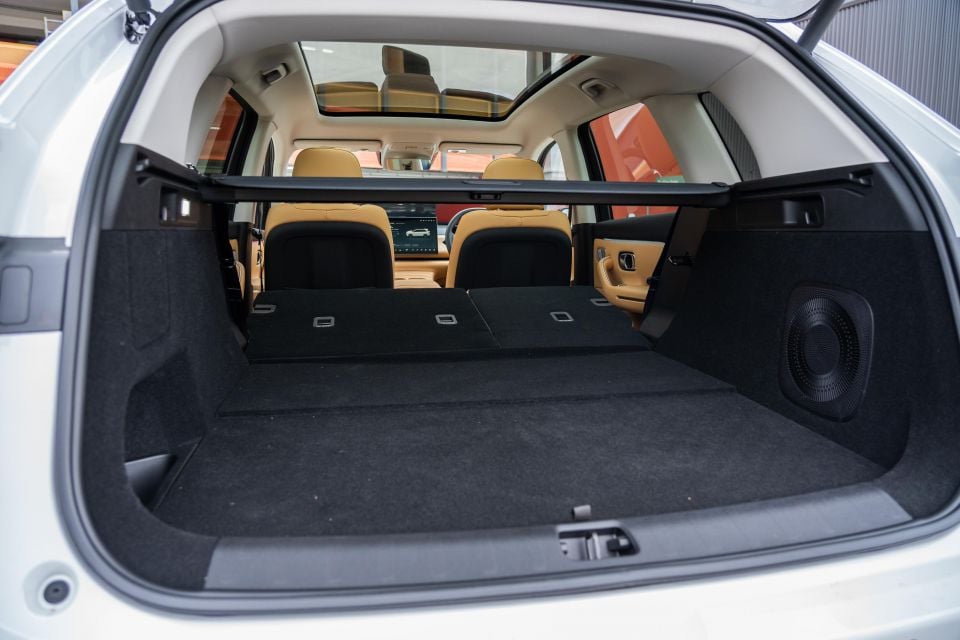
| Dimensions | Leapmotor C10 |
|---|---|
| Length | 4739mm |
| Width | 1900mm |
| Height | 1680mm |
| Wheelbase | 2825mm |
| Boot space | 546-1375L |
To see how the Leapmotor C10 stacks up against the competition, check out our comparison tool
What’s under the bonnet?
The C10 REEV is powered by a 158kW electric motor driving the rear wheels hooked up to a 28.4kWh battery – less than half the capacity of the C10 EV’s 69.9kWh energy storage unit. However, the headline act here is the 1.5-litre four-cylinder petrol engine under the bonnet, that acts as a range-extender rather than driving the vehicle.

| Specifications | Leapmotor C10 REEV |
|---|---|
| Drivetrain | Single-motor range-extender hybrid |
| Engine | 1.5L 4cyl |
| Engine outputs | N/A |
| System outputs | 158kW/320Nm |
| Battery | 28.4kWh LFP |
| Transmission | Single-speed |
| Drive type | Rear-wheel drive |
| Weight | 1950kg (kerb) |
| 0-100km/h (claimed) | 8.5 seconds |
| Energy consumption (claimed) | 15.2kWh/100km |
| Energy consumption (as tested) | 18.3kWh/100km |
| Fuel consumption (claimed) | 0.9L/100km |
| Fuel consumption (as tested) | 9.2L/100km |
| Electric driving range | 145km |
| Max AC charge rate | 6.6kW |
| Max DC charge rate | 65kW |
| Fuel tank capacity | 50L |
| Fuel requirement | N/A |
| CO2 emissions | 21g/km |
| Emissions standard | Euro 6 |
| Braked tow capacity | 1500kg |
Leapmotor quotes a combined driving range of up to 1150km on the more lenient NEDC test cycle, with fuel consumption and emissions rated at 0.9L/100km and 21g/km respectively.
Further to the on-board range extender, the C10 REEV retains its ability to be recharged via AC and DC charging methods, with the latter allowing for a 30-80 per cent charge in “approximately 18 minutes”.
While the Australian release doesn’t quote a charging capacity or electric-only range, the previous global announcement noted a 65kW charge rate and 145km WLTP range figure.
To see how the Leapmotor C10 stacks up against the competition, check out our comparison tool
How does the Leapmotor C10 drive?
Leapmotor? More like Beepmotor.
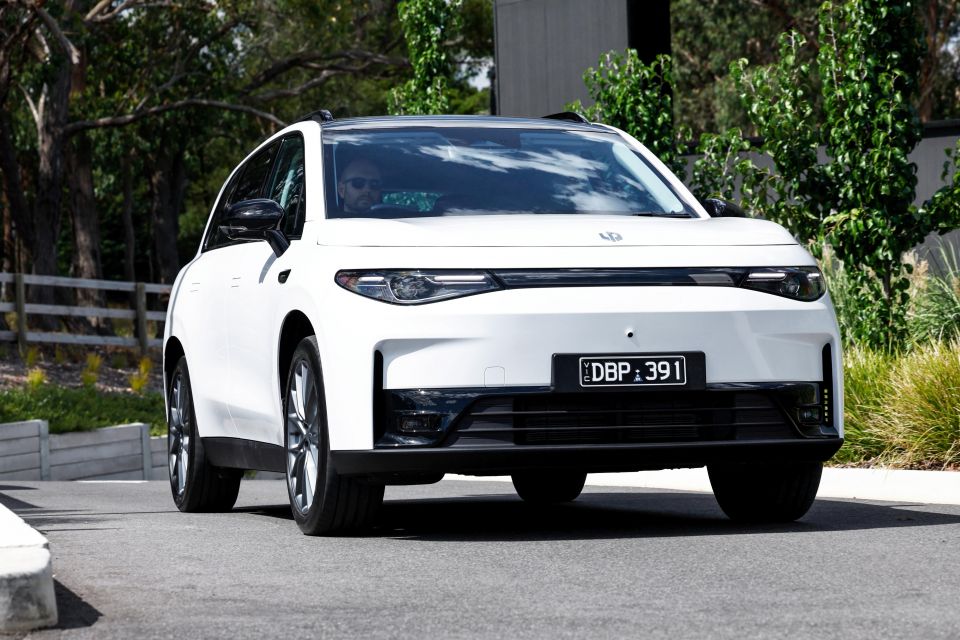
While the loud and proudly brown interior of this C10 will likely divide potential buyers in the showroom, its suite of driver aids is set to universally annoy those who commit to a test drive.
Right from the outset, it’s abundantly clear that Leapmotor has fallen into the trap of cramming as much safety tech as possible into the C10 without taking the time to perfect its calibration.
Around town, I was regularly subjected to some kind of beep or bong from the C10, originating from either the attention monitoring, speed limit, or lane-keep assist systems. All three ‘aids’ continuously slap you over the wrist rather than providing a helping hand, which defeats their purpose.
Adding to my frustration was the fact that the overspeed warning system often failed to adjust for changes to the speed limit, chastising me unfairly. Thankfully, you can turn off some ADAS features via the infotainment screen, but there’s no convenient, one-touch solution to mute all systems.
After pulling over to silence the choir of warning chimes, I was finally able to get a handle on the complex powertrain that sets this C10 REEV apart from its competition.

Marketed as an evolution of hybrid and battery electric vehicles, the extended range electric C10 features a small internal combustion engine thats sole purpose is to charge an electric motor that drives the rear wheels. In other words, the petrol engine is not directly connected to the wheels.
If you’re familiar with Nissan’s e-Power tech, this is similar, but the battery in the C10 REEV is much larger, offering extended electric driving range and the option of external charging. Think of it like the difference between a standard series hybrid (HEV) and a plug-in hybrid (PHEV).
In theory, range extenders are a neat halfway house between hybrid and electric vehicles. They drive like an EV, but don’t leave you stranded when charging facilities aren’t available.
But in the case of the C10 REEV, the reality is a little more complicated. For starters, the powertrain behaves very differently depending on conditions and driver preferences.
You can choose from four ‘power modes’ – EV+, EV, Fuel, and Power + – each of which alters the engine usage/battery depletion mix, and in turn influences the driving experience.

When set to the former, the C10 behaves exactly like an EV with a claimed driving range of 145km. It’s a similar story when driving in EV mode, although the petrol engine will automatically fire up when the battery is low on charge.
As you might expect, Fuel and Power+ prioritise engine usage to charge the drive battery and maximise performance… at the cost of fuel consumption.
This system works relatively well when the battery is fully charged, offering flexibility that a BEV can’t match. However, the quality of the driving experience can vary greatly from one drive to the next, or even within the same journey, leading to unpredictability.
For example, there was one occasion when I attempted to accelerate on a cold morning and the C10 failed to respond to my inputs due to low battery charge. This presents a potential safety risk when you’re in need of a burst of power in traffic or at an intersection.
Even when it’s firing on all cylinders (pardon the pun), acceleration is underwhelming. Leapmotor claims that the C10 REEV can sprint from 0-100km/h in 8.5 seconds, and while that may be true in ideal conditions, it feels slower in many scenarios.

That instant surge of torque you associate with EVs is lacking here, and similarly priced electric rivals will leave the C10 REEV in the dust from a set of traffic lights.
It doesn’t help that pedal feel in the C10 REEV is subpar – both the accelerator and brake pedals are spongy and tricky to modulate.
In addition to inconsistent performance, the C10 REEV demonstrated fluctuating levels of refinement throughout our test. One moment the petrol engine will be going about its business in near-silence and then, out of nowhere, it’ll transition to a noisy thrum that detracts from cabin ambience.
During those moments, even though you’re driving what feels like an electric car, the petrol engine reintroduces noise and vibrations that are more closely aligned to the experience of a regular ICE vehicle.
That brings us to efficiency. We saw fuel and energy consumption figures of 9.2L/100km and 18.3kWh/100km respectively over three days of mostly urban driving, neither of which scream frugality. Admittedly, we ran the battery charge right down to near-empty in our time with the C10 REEV, putting extra load on the little four-cylinder.
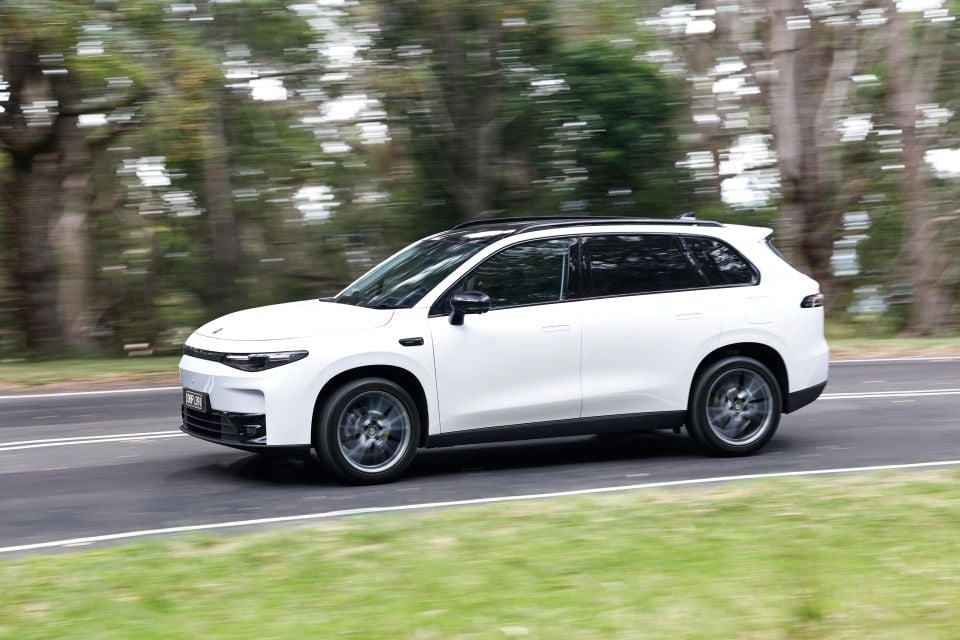
But it still goes to show that traditional hybrids beat the C10 on fuel economy, while also being lighter and simpler to run.
The driving dynamics also leave a bit to be desired. You can barely tell the steering wheel is connected to the wheels at each corner, such is the lightness of the rack, and while that’s beneficial from an ease of use perspective, it doesn’t promote driver engagement.
We didn’t have the chance to drive the C10 REEV on a twisty country road, but I highly doubt it would excel in that environment given the lack of steering feel, performance, and chassis finesse.
The ride isn’t all that great, either. The suspension feels floaty most of the time, but that doesn’t stop the C10 REEV from crashing over suburban speed bumps.
On a more positive note, the C10 offers excellent visibility and manoeuvrability.
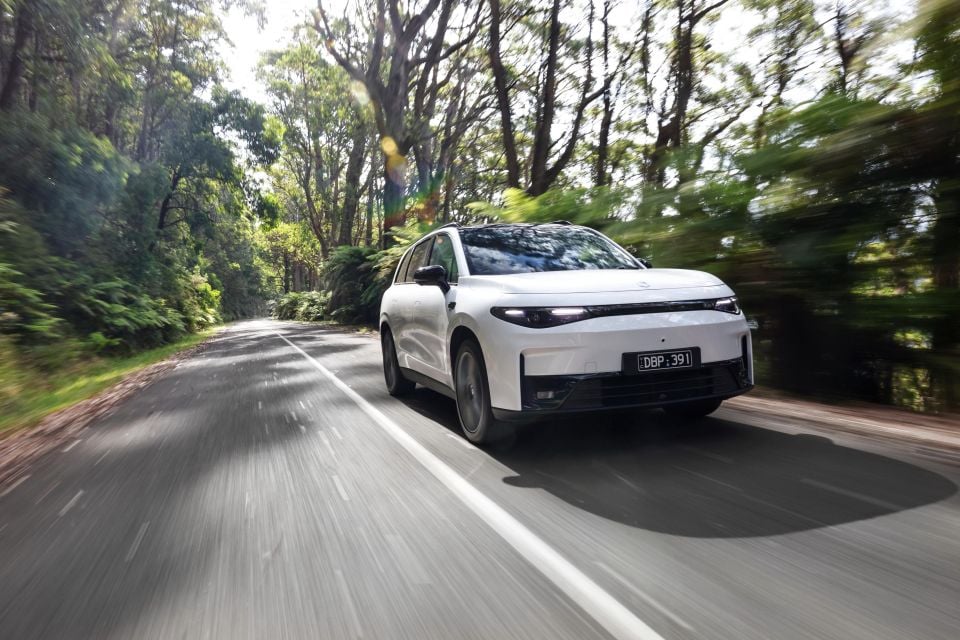
Skinny pillars and an expansive panoramic roof make the cabin feel open and airy while enhancing sight lines, which are also aided by the fitment of a pair of chunky side mirrors.
The C10 also has a great turning circle, especially for its size – don’t hesitate to pull a U-turn in tight confines, when required. Reverse parking is made easy by a suite of cameras that display multiple viewing angles and a handy distance monitor.
While the parking tech demonstrates that Leapmotor is capable of developing user-friendly safety systems, the advanced driver assists systems (ADAS) are a mixed bag, especially on the highway.
Like most modern vehicles, the C10 comes equipped with adaptive cruise control, but Leapmotor has taken it a step further by adding semi-autonomous driving features including active lane centring and traffic jam assist.
On paper, it’s a highly advanced system, but there’s plenty of work to do from a calibration standpoint. I spent plenty of time on the highway in the C10 and found that lane centring was often ‘unavailable’, even in perfect conditions.

Even when the system was functioning, it’s twitchy and always making micro adjustments that are unsettling for the driver. The lane-keep assist function is similarly overactive – think of ten-pin bowling with the side barriers up.
I didn’t have anywhere near as much trust in the assisted driving tech in the C10 as I do with rival SUVs, that’s for sure.
Safety systems aside, the C10 REEV is a decent enough cruiser. It’s quiet on the highway, and insulated enough to block out exterior noise.
However, the electric motor feels a little strained when you opt for pure EV driving. At least you know it’ll go the distance on long journeys, which can’t be said of many BEVs.
What do you get?
The REEV’s lineup effectively mirrors that of the C10 EV, meaning Style and Design grades and a solid level of standard specification.
2025 Leapmotor C10 Style equipment highlights:
- Eco, Comfort, Sport and Custom drive modes
- One-pedal drive mode
- Mode 2 and Mode 3 charging cables
- Panoramic fixed glass roof with electric sunshade
- 18-inch alloy wheels
- Automatic LED headlights
- Rain-sensing wipers
- 10.25-inch digital instrument cluster
- 14.6-inch touchscreen infotainment system
- WiFi and 4G connectivity
- Over-the-air updates
- Satellite navigation
- Ability to log into embedded apps like Spotify
- 12-speaker 840W sound system
- Wireless phone charger
- Dual-zone climate control
- Heat pump
- TechnoLeather upholstery
- Six-way power driver’s seat
- Four-way power passenger seat


Leapmotor C10 Design adds:
- 20-inch alloy wheels
- Rear privacy glass
- LED rear light bar
- Silicone leather seats with Oeko-Tex
- Heated and ventilated front seats
- Heated steering wheel
- Power tailgate
- Multi-colour ambient lighting
- Air quality monitor
To see how the Leapmotor C10 stacks up against the competition, check out our comparison tool
Is the Leapmotor C10 safe?
The Leapmotor C10 has a five-star ANCAP safety rating based on testing conducted in 2024 by Euro NCAP.
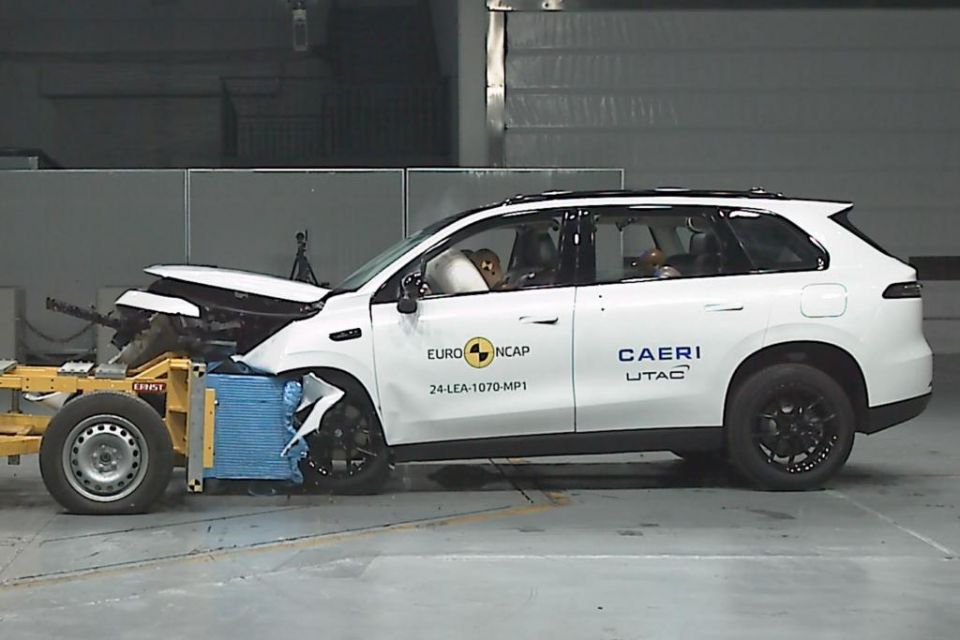
| Category | Leapmotor C10 |
|---|---|
| Adult occupant protection | 89 per cent |
| Child occupant protection | 87 per cent |
| Vulnerable road user protection | 77 per cent |
| Safety assist | 77 per cent |
Standard safety equipment highlights:
- 7 airbags
- Adaptive cruise control
- Autonomous emergency braking
- Blind-spot monitoring
- Driver attention monitoring
- Lane centring
- Lane-keep assist
- Emergency lane-keep assist
- Rear cross-traffic assist
- Safe exit warning
- Surround-view camera
- Rear parking sensors
All C10 owners also get three years of complimentary connected services access. This includes the use of the Leapmotor smartphone app.
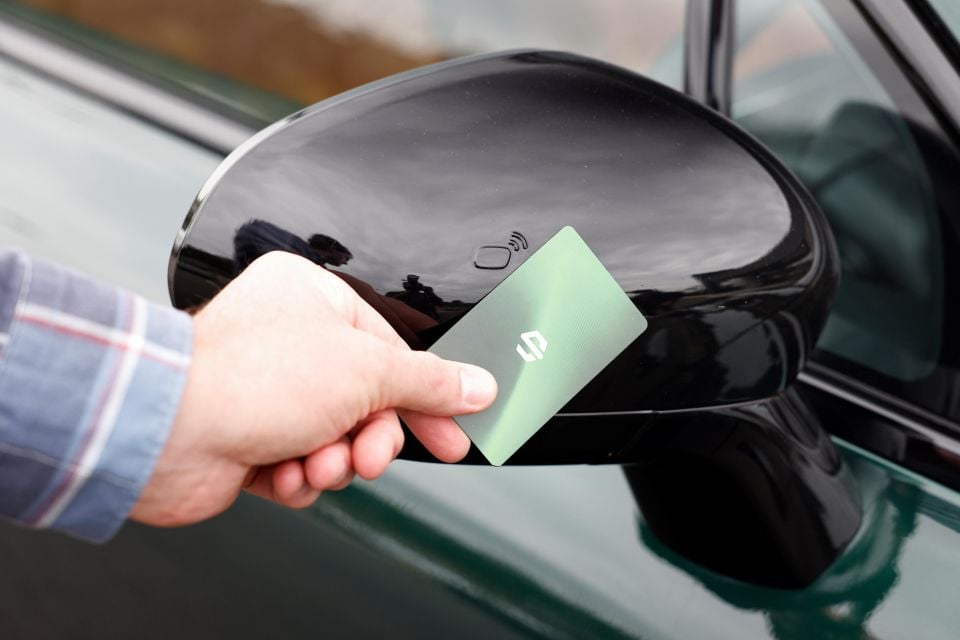
Functions include:
- Schedule battery charging
- Battery pre-heating
- Remote climate control
- Remote vehicle status
- Remote control convenience features
- Remote central locking
- Bluetooth key support
- Real-time car location
To see how the Leapmotor C10 stacks up against the competition, check out our comparison tool
How much does the Leapmotor C10 cost to run?
The Leapmotor C10 is covered by a six-year, 150,000km warranty, while its high-voltage battery pack is covered by an eight-year, 160,000km warranty.
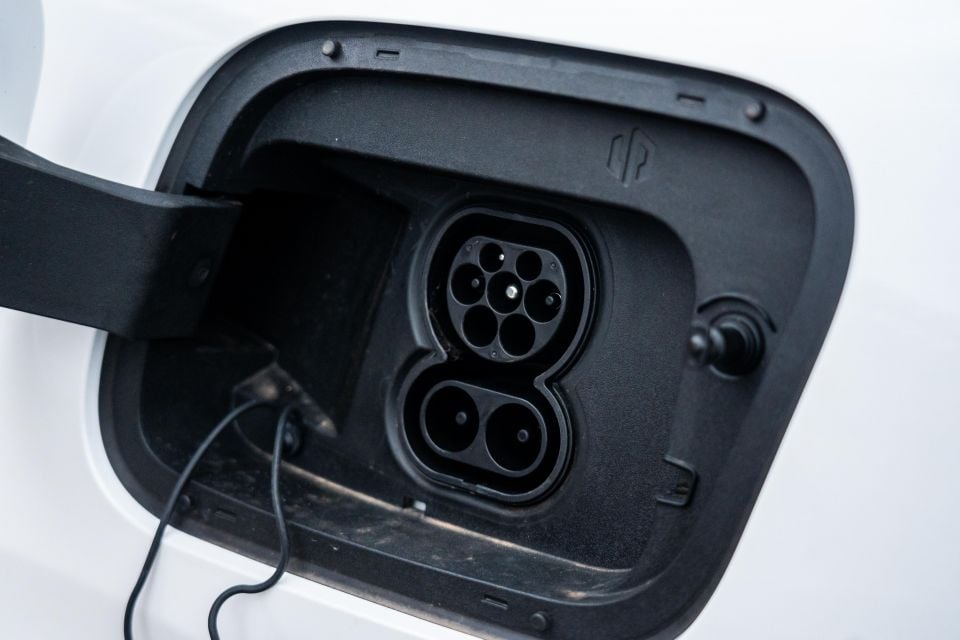
| Servicing and Warranty | Leapmotor C10 |
|---|---|
| Warranty | 6 years, 150,000km – vehicle 8 years, 160,000 – drive battery |
| Roadside assistance | 8 years |
| Service intervals | 12 months or 20,000km |
| Capped-price servicing | 8 years |
| Average annual service cost (5 years) | $400 |
| Total capped-price service cost (5 years) | $2000 |
To see how the Leapmotor C10 stacks up against the competition, check out our comparison tool
CarExpert’s Take on the Leapmotor C10 REEV
In many ways, the Leapmotor C10 feels like a cheaper, lesser Tesla Model Y.
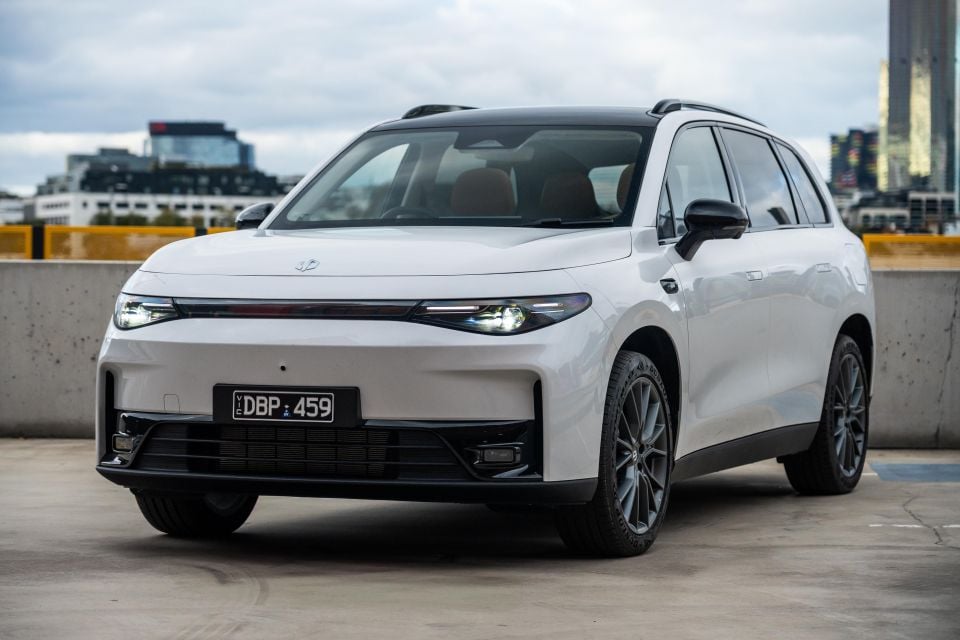
The minimalist, tech-focused cabin is straight out of the Tesla playbook, the semi-autonomous driving features are similarly ambitious, and the packaging is equally practical.
If you love the Model Y (or the idea of one), the C10 hits many of the same beats, albeit with a few extra beeps.
The driving experience is nowhere near as sophisticated, either. While the addition of a petrol engine may quell range anxiety, it detracts from refinement and doesn’t address the ill-calibrated driver assists that continue to plague the C10.
But on balance, there’s still merit in the C10 as a cut-price Model Y alternative, provided you can tolerate its quirks and flaws.

So, that leaves one remaining question: REEV or EV?
With 420km of claimed range, the EV doesn’t lack endurance for the daily commute, especially if you can charge it at home. It’ll also be cheaper to run, as the powertrain is less complex and there’s no need to visit the petrol pump.
On the other hand, the REEV is cheaper to purchase and offers more flexibility to travel long distances without stressing over charging infrastructure – handy for rural buyers, or those who head out bush on a regular basis.
With that said, it’s not particularly efficient, and the mixed drivetrain often feels disjointed on the road. As such, this new version of the C10 formula seems like a compromise that’s only worth making for a small subset of buyers.
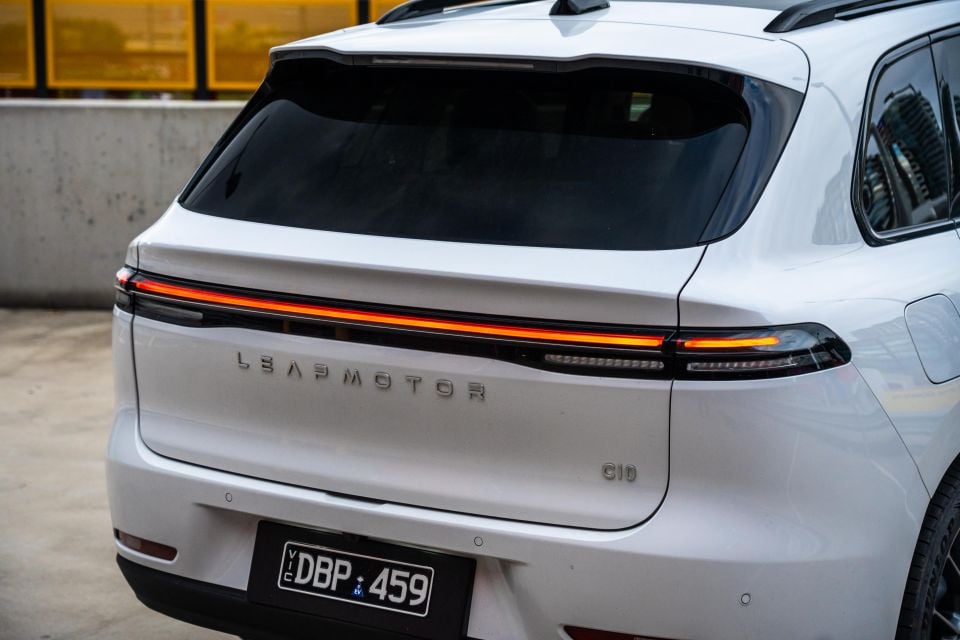
Interested in buying a Leapmotor C10? Let CarExpert find you the best deal here
Click the images for the full gallery
MORE: Explore the Leapmotor C10 showroom


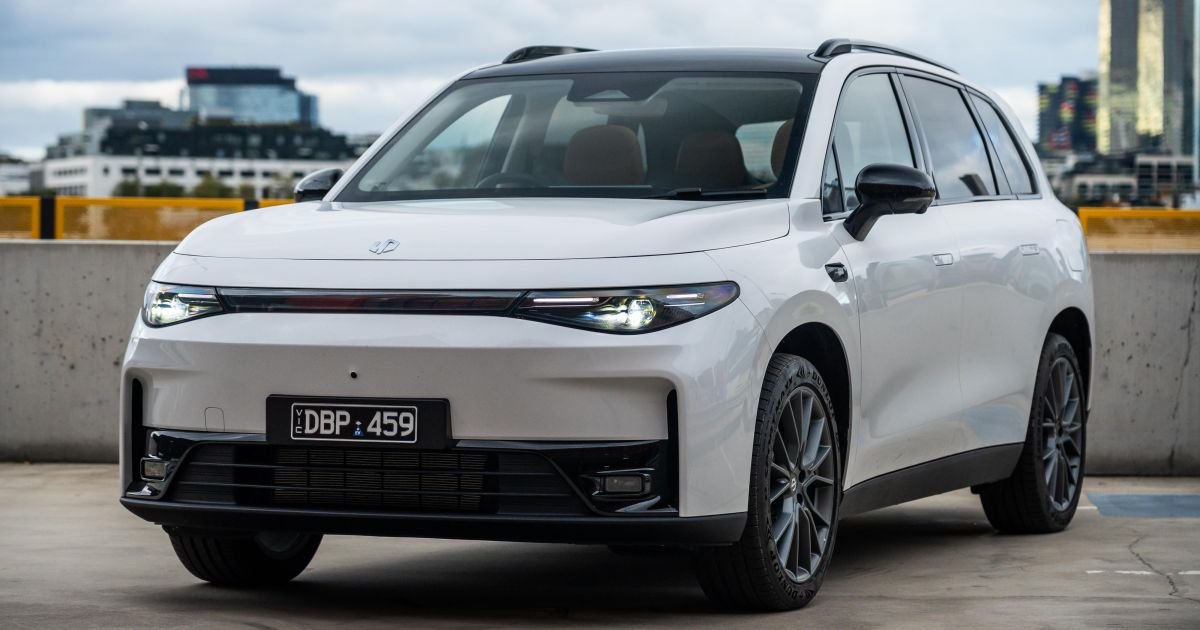










Leave a Reply